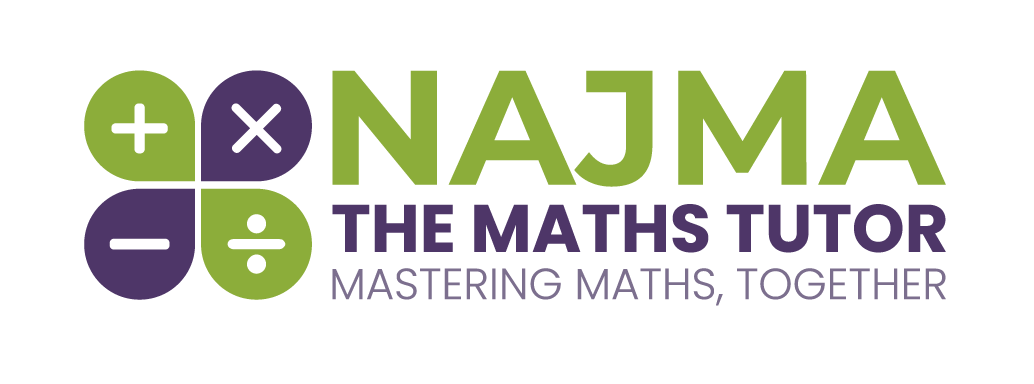
Supporting Your Teen Through the Most Challenging A Level
A Level Maths is one of the most respected qualifications—but it’s also one of the most demanding. Even the most capable students face hidden hurdles that aren’t always obvious in class.
At Najma The Maths Tutor, we’ve helped students go from confused to confident by tackling these challenges head-on. Here’s what students tend to struggle with—and how we support them to succeed.
Top 8 A Level Maths Mistakes Students Make
 1. Rushing to Use Logs Without Simplifying First
1. Rushing to Use Logs Without Simplifying First
The mistake: In questions involving exponential expressions like [math]y = 2^x \cdot 4^x[/math], students often jump straight to using logarithms.
Why it happens: They’re taught that “logs help rearrange equations,” but forget that simplifying powers first would save them time and errors.
How we help: We train students to pause and simplify using index laws first, before applying advanced techniques:[math]4^x = (2^2)^x = 2^{2x}[/math],
so the full expression becomes [math]y = 2^x \cdot 2^{2x} = 2^{3x}[/math].
 2. Forgetting That Area Under a Graph = Distance
2. Forgetting That Area Under a Graph = Distance
The mistake: In speed–time graph questions, students forget that the area under the curve represents distance—and apply SUVAT formulas incorrectly.
Why it happens: They’re not confident when to switch between graphical and algebraic methods.
How we help: We teach visual interpretation skills and how to confidently choose between trapezium rule, suvat, or estimation methods:[math] \text{Distance} = \text{Area under curve} = \frac{1}{2}(a + b)h [/math] for trapezium.
 3. Using Degrees Instead of Radians in Area Formulas
3. Using Degrees Instead of Radians in Area Formulas
The mistake: In sector area or arc length questions, students use degrees where radians are required.
Why it happens: A habit from GCSE Maths, where degrees were the default.
How we help: Our lessons emphasise the difference between GCSE and A Level techniques, including when and why radians matter.
 4. Misunderstanding Composite Functions
4. Misunderstanding Composite Functions
The mistake: In questions like [math]g(g(0))[/math], students substitute into the wrong part of a piecewise function or mix up domains.
Why it happens: They don’t always check which rules apply at which values of x.
How we help: We teach a step-by-step substitution process with domain diagrams and logic-based checking.
- Find [math]g(0)[/math],
- Then apply [math]g[/math] again to that result: [math]g(g(0))[/math].
 5. Confusing Profit with Cost in Modelling Questions
5. Confusing Profit with Cost in Modelling Questions
The mistake: Students mix up cost, revenue, and profit when building models in context.
Why it happens: These aren’t always clearly explained in class, especially when equations start looking complicated.
How we help: We use real-life examples (e.g. soap-making, sales, or budgeting) to show how to build and interpret linear models with confidence e.g.:
- [math]\text{Profit} = \text{Revenue} – \text{Cost}[/math]
- [math]R(x) = px[/math], [math]C(x) = fx + c[/math]
 6. Getting Lost in Infinite Series or Logarithmic Sums
6. Getting Lost in Infinite Series or Logarithmic Sums
The mistake: Students apply the wrong formula (arithmetic instead of geometric), or don’t spot telescoping patterns in logarithms.
Why it happens: They rely too heavily on formula sheets instead of understanding the pattern.
How we help: We guide students to list out terms, spot patterns, and test logic before rushing into formulas.
 ️ 7. Vectors: Reversing Directions or Forgetting Ratios
️ 7. Vectors: Reversing Directions or Forgetting Ratios
The mistake: In geometry and vector ratio problems, students flip directions or assume math]\vec{OB} = \vec{BO}[/math].
Why it happens: Visualising 3D movement or proportional reasoning is tough without diagrams.
How we help: Our students learn with diagrams, colour-coded vectors, and consistent language like “from O to B” instead of ambiguous terms.
 8. Skipping Final Steps in Proofs
8. Skipping Final Steps in Proofs
The mistake: Students find the right path but forget to conclude or state their result clearly in “Show that” questions.
Why it happens: They’re nervous or unsure what examiners expect.
How we help: We give guided proof practice and clear sentence starters like “Therefore, this proves that…” to build mathematical communication skills.
 Why These Misconceptions Matter
Why These Misconceptions Matter
Even the brightest students can lose marks over small errors—errors that are preventable with the right guidance. In our one-to-one and group sessions, we address these common pitfalls head-on with:
- Clear explanations
- Step-by-step breakdowns
- Real exam-style practice
- Personalised feedback and encouragement
 Want to Help Your Teen Avoid These Mistakes?
Want to Help Your Teen Avoid These Mistakes?
We support A Level students to gain the confidence, clarity, and skill needed to approach any maths question without fear.
 Book a free consultation or learn more about our A Level tutoring.
Book a free consultation or learn more about our A Level tutoring.
Want to make sure your child gets the most out of tutoring?
🎯 Read these 10 effective ways to help your child get the most out of online maths tutoring.
Curious how tutoring really benefits students?
🎯 Discover 7 incredible benefits of mathematics tutoring every parent should know.
